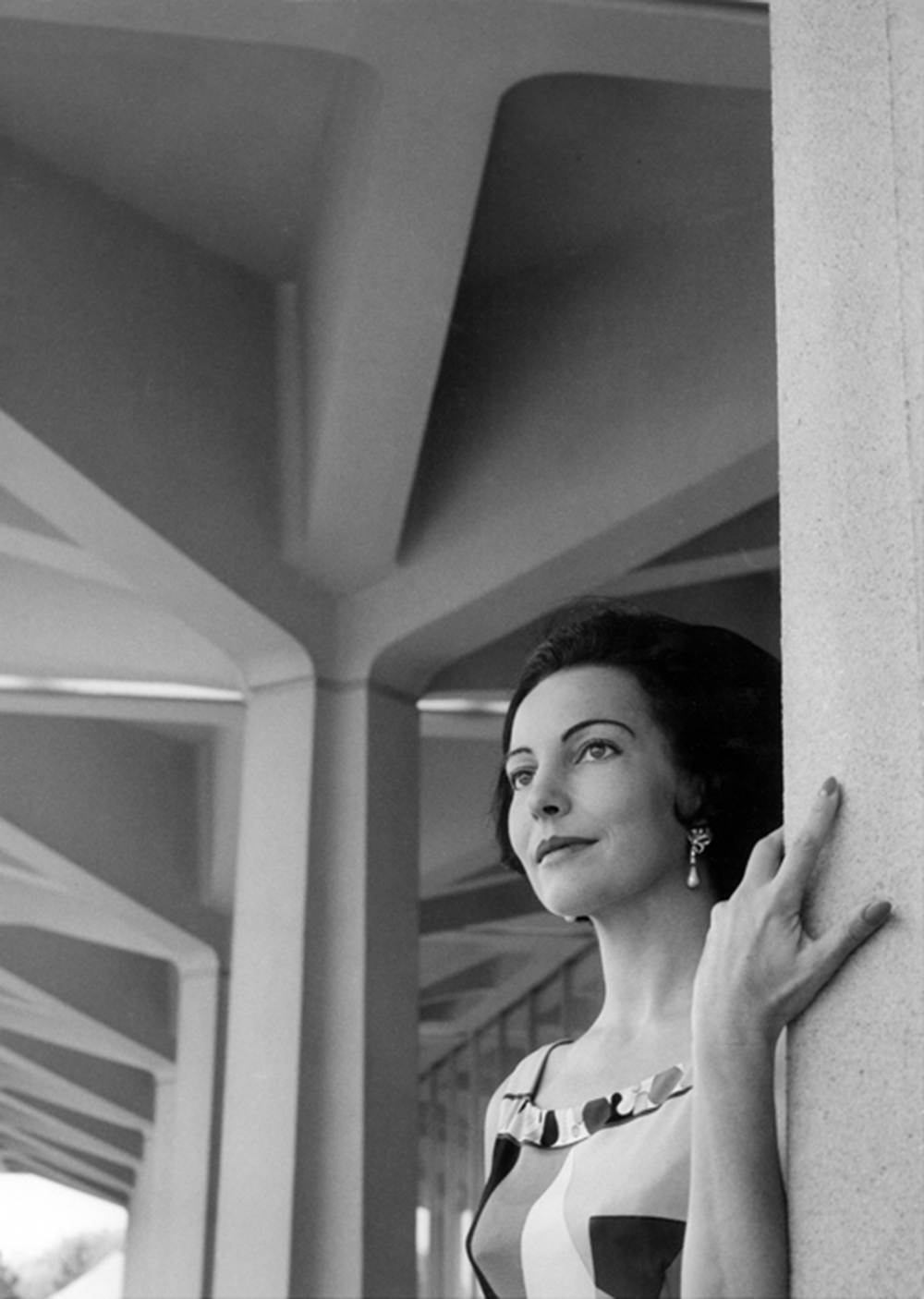Submitted by Berrin Chatzi Chousein
Canadian style icon Sonja Bata to receive RAIC Lifetime Contribution Award
Turkey Architecture News - May 14, 2015 - 15:12 8260 views

Sonja Bata,1966-By Roloff Beny,Ink on paper,Library and Archives Canada.1986-009 © Estate of Roloff Beny.Reproduced with permission of Estate
Canadian style icon received RAIC Lifetime Contribution Award announced by RAIC yesterday,Sonja Bata is also known with her famous Bata Shoe Museum in downtown Toronto opened in 1995 and designed by Moriyama & Teshima Architects.The museum collected over a thousand shoes and related artefacts (from a collection numbering over 13,000) on exhibit in architect Raymond Moriyama’s award-winning five floor structure.The main objective of the Foundation was to operate an international centre for footwear research which houses the Bata Shoe Museum’s collection of over 13,000 shoes and related items.
The Royal Architectural Institute of Canada (RAIC) will bestow a special Lifetime Contribution Award to Sonja Bata, Hon.MRAIC, a strong advocate of design excellence and benefactor of architecture worldwide.
Over the past 68 years, Mrs. Bata has furthered public awareness and appreciation of design and building excellence through the organizations she has led.She and her late husband Thomas Bata also commissioned a remarkable series of architecturally significant buildings.
“What a great honour and I feel rather humble,” says Mrs. Bata. “So many projects I was involved in succeeded because of the people with whom I worked. All my life, I was striving for excellence in design. Good architecture can make such a difference in creating pleasant and inspiring environments for people.”
Mrs. Bata had originally been nominated for the 2015 RAIC Advocate for Architecture Award. However, an independent jury felt that her long list of achievements was “more on the level of patron” than advocate.The jury recommended that the RAIC give a special recognition.
“The nomination of Sonja Bata represents a lifetime of work that is astounding in its breadth, rigour and commitment,”said the three-member jury.“This nomination represents a series of achievements so compelling and special that it deserves recognition and its own special award.”
Mrs. Bata is to receive the award at the RAIC Festival of Architecture which takes place in Calgary June 3 to 6, in collaboration with the Alberta Association of Architects.
The jury members:
-Michael McClelland, FRAIC, Principal of E.R.A Architects in Toronto
-Bernard Flaman, FRAIC, Public Works and Government Services Canada
-Mark Ostry, FRAIC, Principal of Acton Ostry Architects in Vancouver
About Sonja Bata
Sonja Bata has championed many cultural, environmental and social causes, serving as a member of three dozen boards in Canada and elsewhere since 1953. These boards include the Council for Business and the Arts in Canada, the Atlantic Council of Canada, the Royal Military College of Canada, Junior Achievement, the Canadian Unity Council, Batawa Development Corporation, the World Wildlife Fund International, Mentor International and Tomas Bata University.
From 1964 to 1976, Mrs. Bata was a member of the National Design Council of Canada and its chairwoman from 1973-1975.Under Mrs. Bata’s leadership, the National Design Council saw its role as a catalyst, to encourage the government and industry to employ good design and to pursue a national design policy and strategy.
Activities included conferences, seminars, grants, awards and exhibits, as well as the issuance of design guidelines and reports.Due to Mrs. Bata’s high profile, the council and its mission received notable press attention, raising awareness of design to a broader public.Born in Switzerland, Mrs. Bata studied architecture at the Swiss Federal Institute of Technology in Zurich. In 1946, she married Thomas Bata Jr., of the Bata Shoe Company founded in Czechoslovakia.
Between 1946 and 1975, the organization expanded to 89 countries; employed 90,000 people; produced 250 million pairs of shoes annually, and operated over 5,000 shops.Mr. and Mrs. Bata commissioned architects to design factories, shops and planned communities all over the world. These factory towns were complete cities, designed by architects as models of sustainability and social innovation with accompanying schools, healthcare facilities, and community, cultural and religious centres.
In 1939, the company created a factory town in Batawa, north of Trenton, which became the Bata headquarters in Canada. In 1959, the Batas commissioned their house in Batawa, which was designed by Parkin Architects and still stands as a beautiful example of mid-century modern design.
In 1964, the Batas moved the company’s headquarters to Toronto, and again commissioned Parkin Architects to design the iconic Bata International Centre, which opened in 1965. (It was demolished in 2008).They opened the Bata Shoe Museum in Toronto in 1995, designed by Moriyama & Teshima Architects.
Mrs. Bata continues to pursue her passion for the built environment in the revitalization of the town of Batawa and the original shoe factory. Her vision is to make Batawa once again a model community for social and environmental sustainability.
> via raic.org
